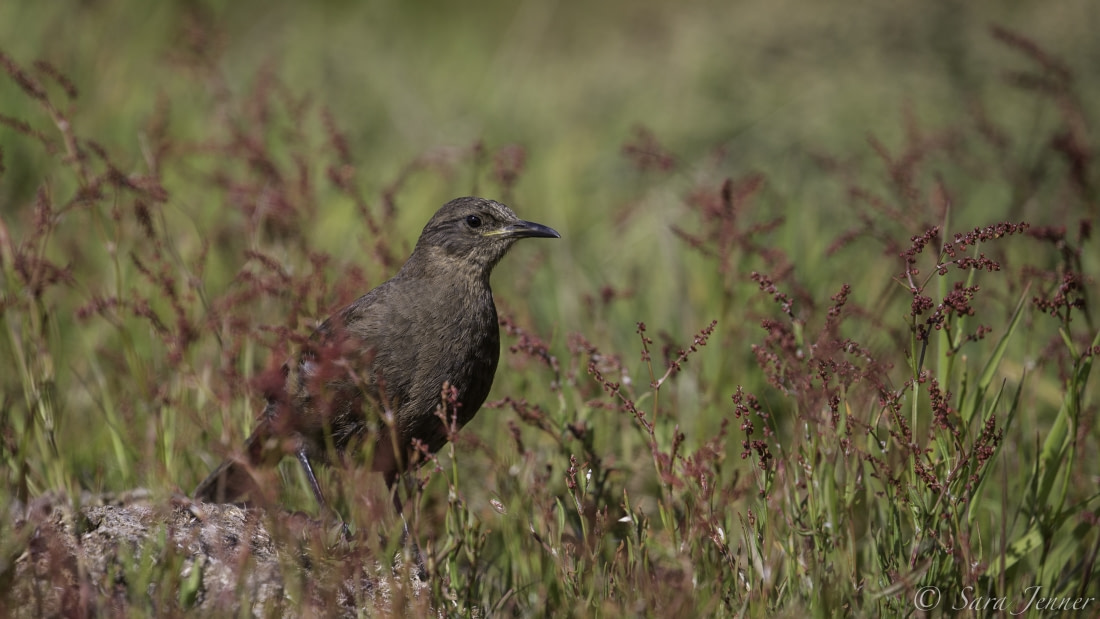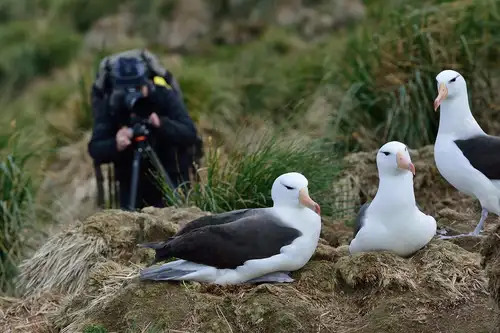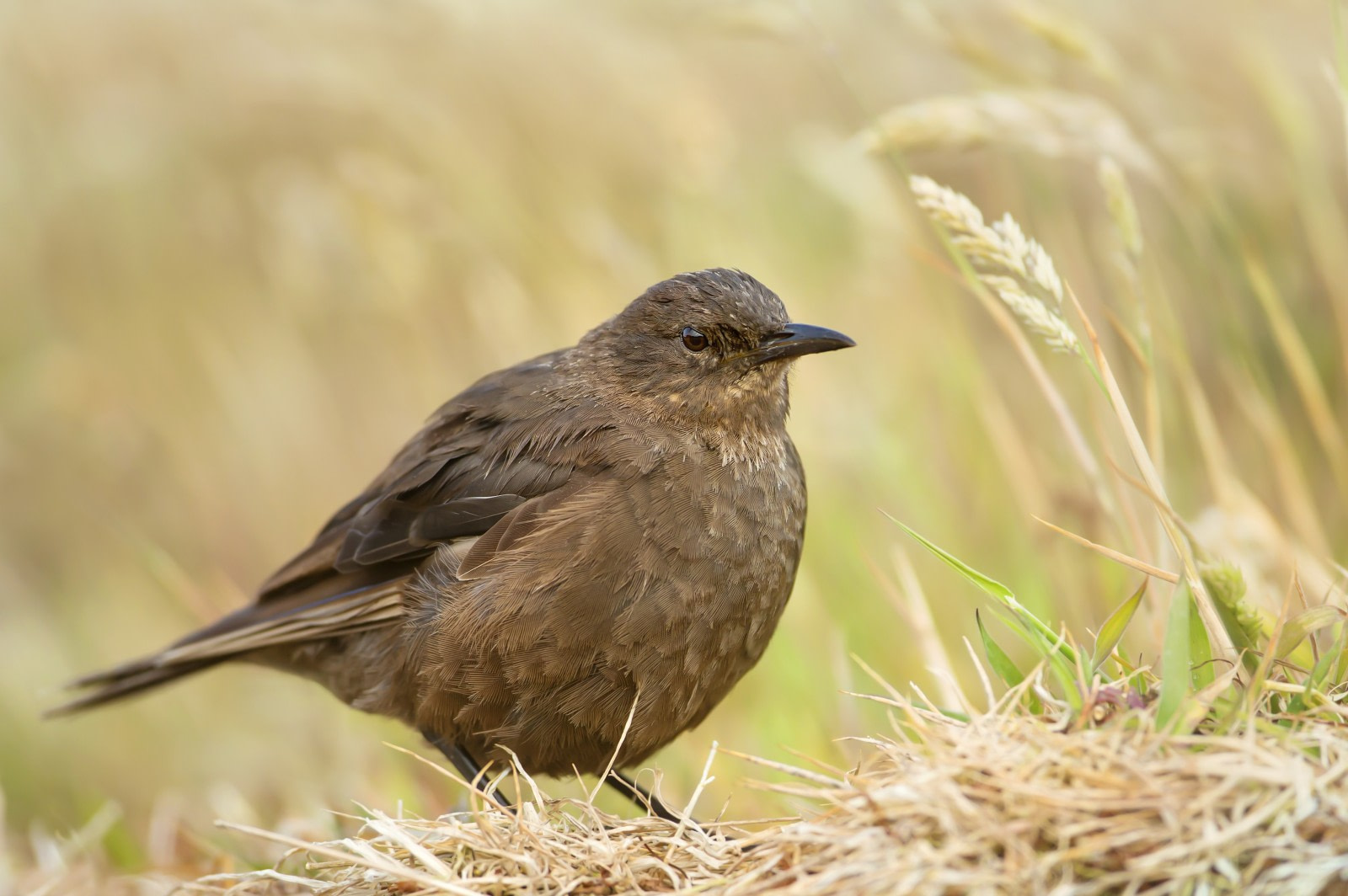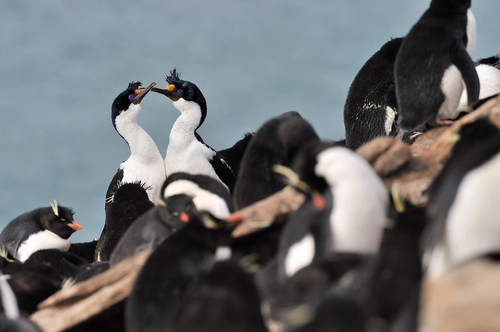Name: Tussac-bird, Tussock-bird, Blackish Cinclodes (Cinclodes antarcticus)
Length: 18 to 23 cm.
Location: Falklands, southern tip of South America.
Conservation status: Near Threatened.
Diet: Mainly small invertebrates, also carrion and food scraps from humans and other animals.
Appearance: Uniform dark brown plumage. Faint reddish-brown stripe on wings. Slightly paler stripe above eyes. Long dark bill with slight downward curve, pale yellow spot at the base.
How do Tussac-birds feed?
Tussac-birds forage amongst beached seaweed along shorelines. They also pick at carrion and food remains left by animals and humans.
Are Tussac-birds social?
Tussac-birds are known for being very tame around humans.

What are Tussac-birds birthing rituals like?
The breeding season runs from September to December. Nests are cup-shaped, placed among rocks, grass clumps, holes, or in buildings, made of grass and lined with feathers. They lay 1 to 3 white eggs with red spots, often having 2 broods per season. Eggs are incubated for 2 weeks, and chicks fledge after another 2 weeks.
How long do Tussac-birds live?
Passerines generally live about 3 years in the wild.
How many Tussac-birds are there today?
There are an estimated 10,000 breeding pairs on the Falkland Islands.
Do Tussac-birds have any natural predators?
Tussac-birds are preyed upon by rats and cats.
7 Terrific Tussac-bird Facts
- Tussacs are quite tame and approach humans.
- They are scarcer on the mainland and Falkland islands with introduced predators like rats and cats.
- There are two subspecies: Cinclodes antarcticus antarcticus and Cinclodes antarcticus maculirostris, the latter being slightly larger.
- They are one of the few passerines that stay along coasts.
- Often found near seal and sea-lion haul-out locations.
- Human feet may turn up tasty insects and grubs, explaining their friendliness.
- They have been seen drinking blood from the wounds of sea lions and seals.






Related Trips



15 Falkland Islands Bird Photos






 19 Days / 18 Nights
19 Days / 18 Nights



